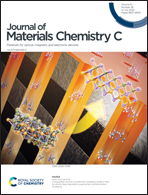Energy levels of Eu2+ states in the next-generation LED-phosphor SrLi2Al2O2N2:Eu2+
Abstract
Understanding electronic structure properties of narrow-band emitting phosphor materials is important for finding and tailoring novel materials for fabrication of phosphor converted (pc)-LEDs. Thereby, illumination quality can be improved while further reduction in worldwide energy consumption is achieved. In pc-LEDs, the energetic position of the Eu2+ 5d1 states with respect to conduction band and valence band of the host lattice determines the electronic structure and the optical properties, such as thermal quenching and quantum efficiency under application conditions. Here, we experimentally determine the energetic position of the Eu2+ 5d1 state for the narrow-band red-emitting phosphor SrLi2Al2O2N2:Eu2+ (SALON) employing resonant inelastic X-ray scattering (RIXS) measurements. The position of the 5d1 energy level of the dopant Eu2+ is determined directly from RIXS measurements at the N K- and O K-edges and is found to be 0.53 ± 0.04 eV (N K-edge) and 0.48 ± 0.10 eV (O K-edge) below the conduction band. We further use X-ray excited optical luminescence measurements to provide a deeper understanding of the energy levels and radiative processes involved in SALON, as the method allows determination of the 4f7 energy levels thus confirming the narrow-band luminescence in the red spectral region at 610 nm due to the 4f65d1 → 4f7 transition.



 Please wait while we load your content...
Please wait while we load your content...